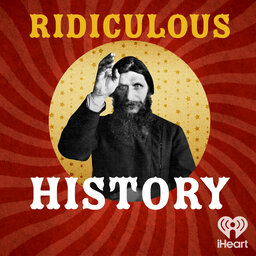The Tragic Origin Story of Morse Code
The telegraph and the communication system known as Morse code revolutionized the way we transmit information, but how did it get here? Join the guys as they explore the tragic life and time of Samuel Morse.
Learn more about your ad-choices at https://www.iheartpodcastnetwork.com
 Ridiculous History
Ridiculous History


